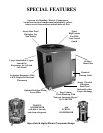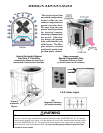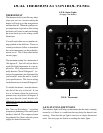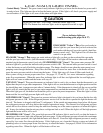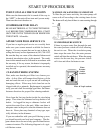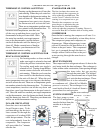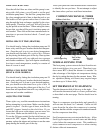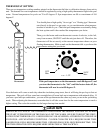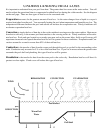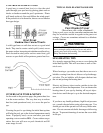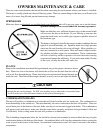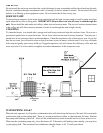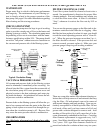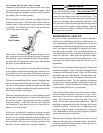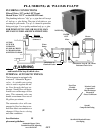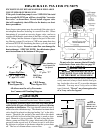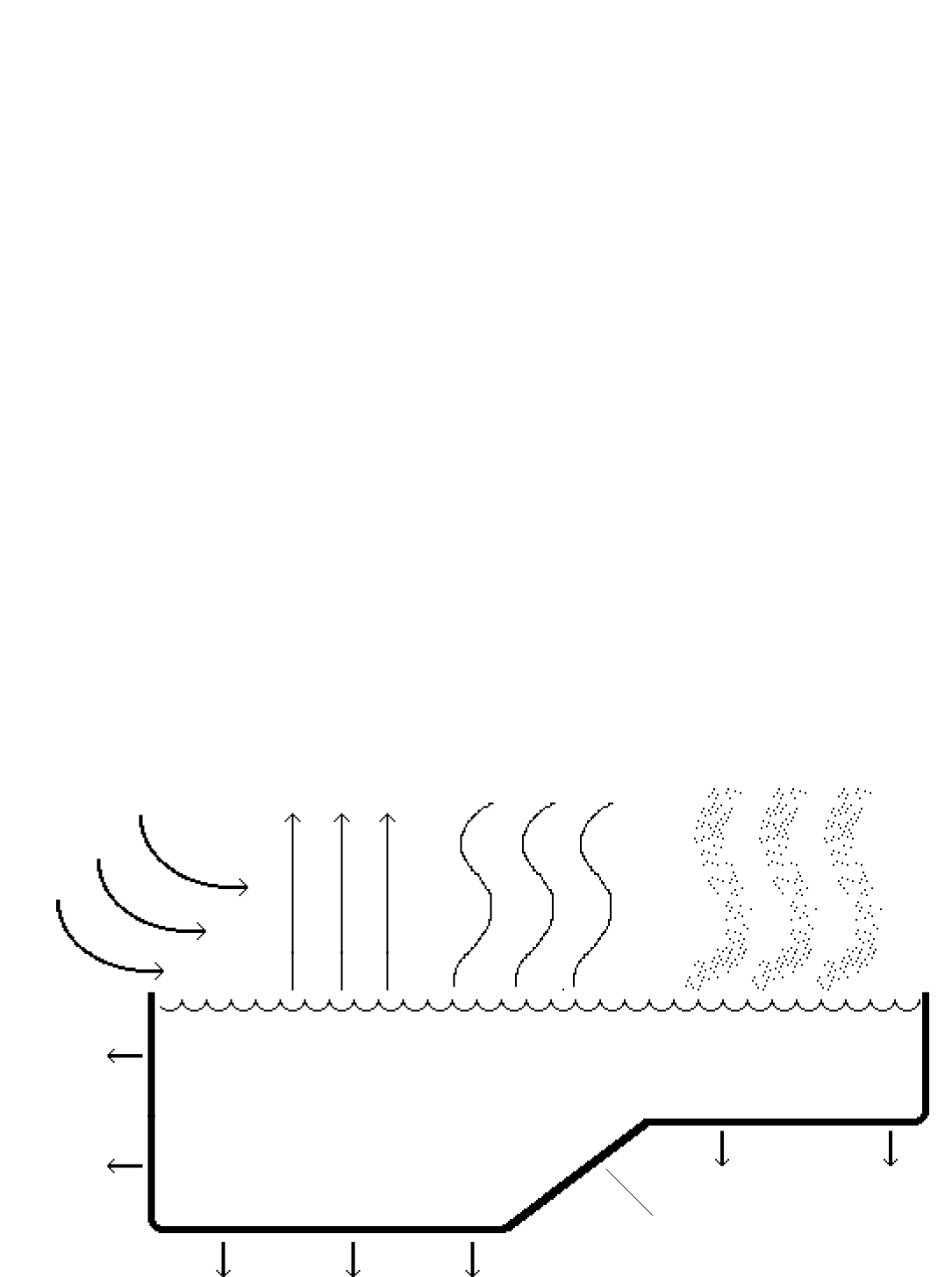
RERADIATION CONVECTION
EVAPORATION
WIND
CONDUCTION
Pool Shell
Pool Surface
Warm Pool
Water
UNDERSTANDING HEAT LOSS
It is important to understand how your pool loses heat. The greatest heat loss occurs at the water surface. You will
need to adjust the operational time to compensate for added heat loss during the colder months. See the diagram
on the next page. There are four types of heat loss to be concerned with:
Evaporation accounts for the greatest amount of heat loss. As the water changes from a liquid to a vapor it
requires heat taken from the pool. You are usually heating the pool when temperatures and humidity are low. The
temperature difference between the pool and outside air increase the evaporation rate. Windy conditions will
accelerate evaporation heat loss.
Convection is simply the loss of heat due to the cooler outside air moving across the waters surface. Heat moves
from hot to cold only, so the warmer pool heat transfers to the moving cooler air. Windy conditions will acceler-
ates heat loss. Pools and spas located on or nearby open area such as the ocean, lakes, fields or golf courses will
experience increased wind speeds therefore heat loss will be greater for these conditions. Evaporation and Con-
vection account for as much or more than 82% of the total heat loss.
Conduction is the transfer of heat from the warm pool through the pool or spa shell to the surrounding cooler
earth. Conduction only accounts for 5 % or less of the total heat loss. If you live in an area where the ground water
surrounds the pool shell and plumbing, this type of heat loss will be greater.
Reradiation is the transfer for heat from the warm pool to the cooler sky. Reradiation heat loss will be at it's
greatest on clear nights. Cloud cover will reduce this type of heat loss.
.
12



